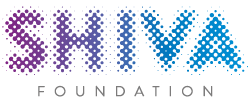
A multi-agency approach to identifying and supporting child victims of modern slavery.
On 18 November, the Hertfordshire Modern Slavery Partnership, in collaboration with the Hertfordshire Safeguarding Children Partnership (HSCP) launched the county’s referral pathway for identifying and reporting potential child victims of modern slavery and human trafficking. The pathway and associated documents, such as information flyers for victims and booklets to inform victims about the National Referral Mechanism (NRM), aim to support anyone who may come into contact with a potential victim to identify and report them to the appropriate channels.
Meet AR, a 17-year-old Sudanese boy who was trafficked into the UK from Libya. He was forced to work long hours each day and never at the same work site. His English language skills were limited and he was assigned a “chaperone” by his exploiters, to translate and speak on his behalf. The agencies who initially came into contact with AR suspected exploitation but were not sure what to do with his case. This delayed the support AR could have been given. Eventually, the relevant information was gathered and there was an attempt to help AR out of his situation. By this time, AR had turned 18 and now needed to consent to be referred to the NRM but declined out of fear of retribution.
While the NRM isn’t appropriate for everyone and adult victims have the right to decline its support, this example is more about the length of time that passed before a known victim of modern slavery was even offered that support. Additionally, had 17-year-old AR been referred to the NRM, he would have been considered a young person and consent wouldn’t have been needed to provide him with NRM-affiliated support. With that in mind, the pathway seeks to help streamline identification and support of potential victims embedded within a multi-agency approach, which in turn will facilitate improved information sharing and provide us with better data on victims and perpetrator. To tackle the problem, we have to know the scale and where resources should be targeted.
In Hertfordshire, 119 modern slavery and human trafficking crimes linked with children and young people were reported between Oct 2019 and Sep 2020. The majority of these cases involve young British nationals who are subject to various types of exploitation. Professionals may only have one opportunity to engage with someone who is in exploitation. The referral pathway provides a step-by-step process from when a child presents to a service, to submission of specified forms to the Home Office, as well as indicators and questions that can support the professional in their interaction with the potential victim. These are critical in allowing professionals, who may encounter possible victims within the remit of their role at work, to respond to the potential victim in the most effective and easiest manner.
The child referral pathway (which can be found here) is the product of over 12 months of consultation with local agencies in Hertfordshire. The process was led by Shiva Foundation’s Kat Rolle, who is the Coordinator of the Hertfordshire Modern Slavery Partnership (HMSP). This post is half funded by the Police and Crime Commissioner for Hertfordshire, David Lloyd. The pathway is intended for, but not limited to, public sector organisations, non-governmental organisations, government agencies, faith organisations, charities and businesses.
HMSP is a multi-agency group made up of more than 100 statutory and non-statutory partners from across the county to work collaboratively in support of an agreed vision to tackle modern slavery and human trafficking in all its forms. The group are led by six strategic priorities: 1) raising awareness, 2) increasing reporting, 3) right knowledge and skills, including training, 4) victim support, 5) perpetrator identification and deterrence and 6) monitoring and evaluation. You can find out more about its work here.
To access the child referral pathway, visit here.


